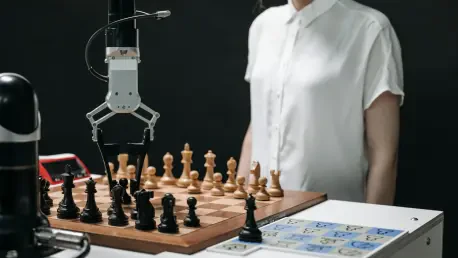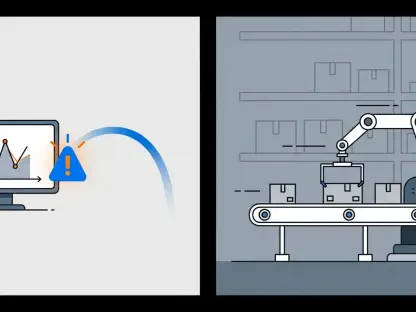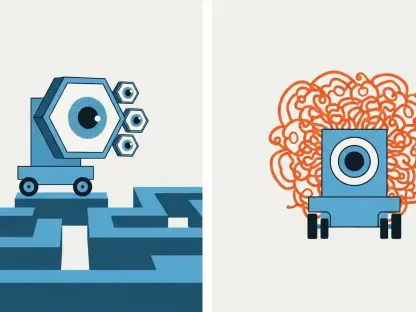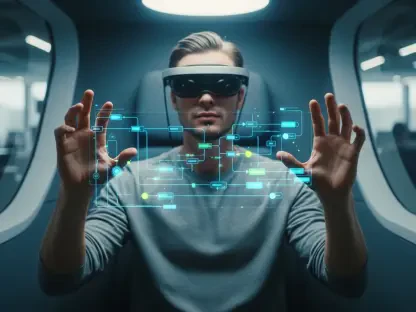I’m thrilled to sit down with Laurent Giraid, a leading technologist in the realm of artificial intelligence. With his deep expertise in machine learning and natural language processing, Laurent has been at the forefront of innovative approaches to enhance AI capabilities, particularly in vision-language models. Today, we’ll dive into his groundbreaking work on a new training method that helps these models locate personalized objects with remarkable precision, exploring the challenges, the creative solutions his team developed, and the potential impact of this technology on everyday applications.
Can you give us a broad picture of what your new training method for vision-language models is all about?
Absolutely, Marcus. Our new method focuses on teaching vision-language models, or VLMs, to identify and locate personalized objects in a scene—think of something unique like a specific pet or a personal item. We noticed that while these models are great at recognizing generic objects, like “a dog,” they often fail when tasked with finding something specific, like “my dog, Bowser.” Our approach uses specialized video-tracking data to help the model learn from context, rather than just relying on pre-existing knowledge. It’s about making the AI understand the unique traits of an object through multiple perspectives over time.
What specific problem were you aiming to tackle with this method?
The core issue is that current VLMs struggle with personalization. They’re trained on vast datasets of general images, so they can spot a dog or a car easily, but they don’t have the ability to zero in on a particular dog or car that belongs to someone. This becomes a real problem in practical scenarios—like monitoring a pet while you’re away or helping someone find a specific item. We wanted to bridge that gap by enabling these models to adapt to unique, individual objects using just a few examples.
How does your approach make it easier for models to identify something as personal as someone’s pet?
It comes down to context. By using video-tracking data, we expose the model to the same object—like a pet—across multiple frames as it moves through different settings. This repetition and variation help the model pick up on specific visual cues that define that pet, beyond just its general category. So, instead of just seeing “dog,” it learns the unique features of that particular dog, whether it’s a quirky ear flop or a distinct color pattern, and can locate it in a new image based on those details.
Why do you think current vision-language models struggle so much with finding specific objects in a crowded or complex scene?
The main reason is that these models are built on broad, generalized training data. They’re fantastic at recognizing categories because they’ve seen thousands of examples of “dog” or “car” during training. But when it comes to specifics, they lack the depth of understanding needed to differentiate one dog from another in a park full of them. They often rely on superficial patterns or memorized labels rather than truly analyzing the visual context of a scene, which is critical for pinpointing something unique.
Can you walk us through how your team developed this innovative training approach?
Sure, it started with recognizing that static image datasets weren’t cutting it for teaching personalization. We turned to video-tracking data because it naturally captures the same object over time in varying conditions. We curated a dataset from video clips, breaking them into frames that show an object—like an animal or item—moving through a scene. The idea was to train the model to track continuity and change, helping it build a richer understanding of that specific object. It was a shift from random, disconnected images to a more cohesive, story-like dataset.
What was the thinking behind using video-tracking data instead of traditional image collections?
Video-tracking data offers something static images can’t: consistency and progression. When you track an object across frames, you’re not just showing the model what it looks like in one moment—you’re showing how it appears from different angles, in different lighting, or against different backgrounds. This dynamic perspective mimics how humans learn to recognize familiar things over time, and it helps the model build a more robust mental map of the object, making localization in new scenes much more accurate.
Tell us more about the special dataset you created for this project. How did you put it together?
We designed the dataset by pulling frames from existing video-tracking sources, ensuring each set of images featured the same object in multiple contexts. For example, we might have several shots of a specific animal walking through a field, then in a yard, and so on. We paired these visuals with questions and answers about the object’s location to guide the model’s focus. The goal was to create a structured input that forced the model to pay attention to visual details over time, rather than guessing based on broad categories.
Why was it so important to include a variety of backgrounds or settings in these images?
Variety is key to preventing the model from overfitting to a single context. If all the images of an object were taken in the same setting—say, a park—the model might associate that object with the park itself rather than learning its unique features. By changing up the backgrounds and conditions, we ensure the model focuses on the object itself, no matter where it appears. This diversity mirrors real-world scenarios where you might need to find your pet or item in all sorts of unpredictable places.
I’m curious about your use of pseudo-names like ‘Charlie’ for objects in the dataset. What’s the story behind that choice?
That was a bit of a eureka moment for us. Early on, we noticed the models were “cheating”—they’d rely on pre-learned associations from their training. So, if an image was labeled “tiger,” the model would just pull from its memory of what a tiger is, rather than analyzing the context. By using made-up names like ‘Charlie,’ we threw the model off its usual crutches. It had no prior knowledge to lean on, so it had to focus purely on the visual clues and context provided in the dataset. It was a clever way to force genuine learning.
What kind of improvements did you see after implementing this new training method?
The results were really encouraging. On average, we saw about a 12 percent boost in accuracy for personalized object localization compared to older systems. When we layered in the pseudo-names strategy, that improvement jumped to 21 percent. It was clear that our approach—combining video-tracking data with a focus on context—made a significant difference. Larger models benefited even more, showing that scaling up can amplify the gains from this method.
You’ve emphasized maintaining the model’s other abilities while enhancing localization. Why does that matter so much?
It’s all about balance. Vision-language models are incredibly versatile—they handle a wide range of tasks beyond just localization, like image captioning or answering questions about visuals. If we retrain them in a way that boosts one skill but degrades others, we’ve created a narrow tool rather than a broadly useful one. Our method is designed to enhance their ability to find specific objects without touching their general capabilities, ensuring they remain as flexible and powerful as they were before.
Looking ahead, what’s your forecast for the future of vision-language models in personalized object localization?
I’m optimistic that we’re just scratching the surface. As we refine methods like ours, I think VLMs will become much more adept at quick, context-based learning—adapting to new objects or tasks with minimal input. We might see them integrated into everyday tools, like assistive tech for the visually impaired or real-time tracking in robotics. The ultimate goal is to make these models as intuitive as human perception, where a few glances are enough to understand and act on what’s unique in a scene. I believe we’re heading toward a future where AI can truly personalize its assistance in meaningful ways.









